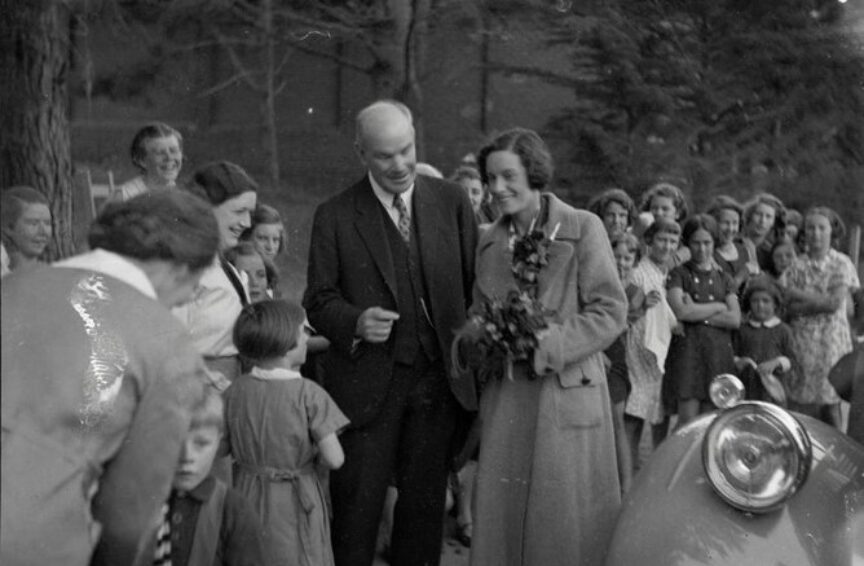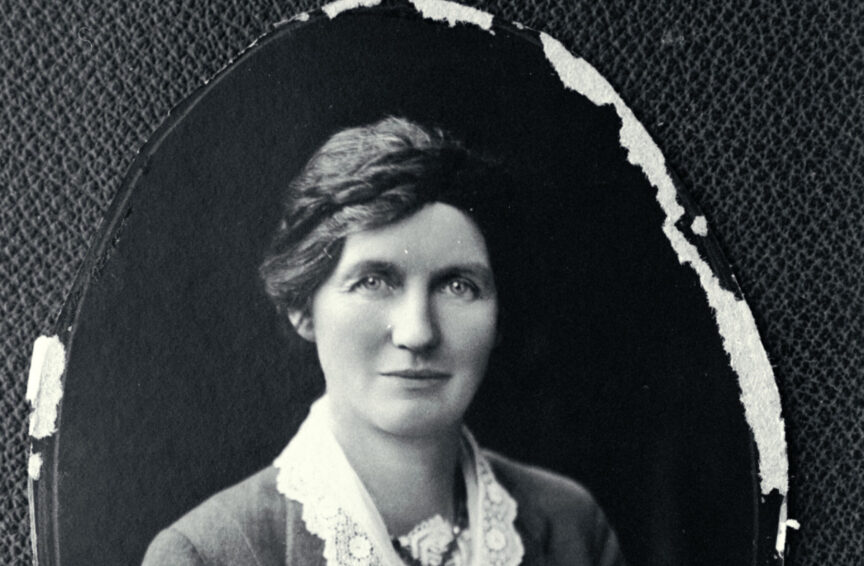PO Box 95
Lyttelton 8841
Te Ūaka recognises Te Hapū o Ngāti Wheke as Mana Whenua and Mana Moana for Te Whakaraupō / Lyttelton Harbour.

Sir Heaton Rhodes visits Lyttelton
Te Ūaka The Lyttelton Museum ref 7089.1
https://www.teuaka.org.nz/online-collection/1009923
The ‘Grand Old Man’ Sir Heaton Rhodes
Sir Heaton Rhodes is pictured here, tall and jolly with bowler hat in hand, strolling past the old Lyttelton Fire Station and Library on the corner of Sumner Road and Oxford Street, Lyttelton, possibly circa mid 1930s or later. He’s in the company of various Lyttelton dignitaries including, on his left hand, the ‘Lyttelton Mayor for life’ Frederick Sutton who held the office for 15 years, on and off, from 1925 to 1944, and whose name graces the port’s wharf road, Sutton Quay.
One might wonder as to the occasion for this street procession, and the rather sullen school children brought out to greet the visiting dignitary, but Heaton Rhodes looms large as one of the most famous and well loved public figures of early twentieth century New Zealand. A son of Whakaraupō he was born at Purau in 1861 before his family moved out to their grand Elmwood House on what is now the grounds of the Heaton Normal Intermediate School adjacent to Elmwood Park on Heaton Street in Christchurch.
His schooling included Mrs Alabaster's school in Cranmer Square and Reverend Charles Turrell's school in Upper Riccarton followed by a stint at the Château de Lancy in Geneva and then the Hereford Cathedral School, England. As a young gentleman he excelled in gentlemen’s sports while completing an MA in law at Oxford, being called to the Bar of the Inner Temple in London before returning to New Zealand as a barrister of the Supreme Court in Christchurch in 1888.
After such an illustrious start in life it is perhaps no wonder Heaton Rhodes went on to greater things across a range of fields. He purchased land near Tai Tapu and with his beloved wife Jessie built the Victorian mansion Otahuna in 1895, establishing New Zealand’s first herd of Norfolk Red Poll cattle on its 5000 acres. Serving as president of the Canterbury Agricultural and Pastoral Association, their Otahuna gardens became very popular amongst horticulturalists and the general public. An avid horseman, he joined the Canterbury Yeomanry Cavalry Volunteers and was promoted to Captain in 1902 before serving with distinction in the Second Boer War. On his return he was Commander of the Canterbury Mounted Rifles Brigade through to 1921.
Meanwhile, his political career began in 1899 when, aged 38, he was elected to the seat of Ellesmere before going on to join Prime Minister Bill Massey’s 1912 cabinet as health minister. Resigning in 1915 to become a special commissioner for the wartime coalition government in Egypt, Malta, and Gallipoli, Rhodes went on to supervise British Red Cross hospitals in France and England. Feted for his wartime service he was awarded Knight Commander (KBE), Order of the British Empire in 1920 at which time he rejoined Massey’s second government as its minister for defence where his purchase of Sockburn Airfield led to the establishment of the Royal New Zealand Air Force and its Wigram Airbase. Not content with these achievements, Rhodes also became Commissioner of State Forests in 1922 and laid the foundations for New Zealand’s flourishing timber industry.
Retiring from elected political life in 1925 at the age of 64, the following year Rhodes was appointed to New Zealand’s ‘House of Lords’, the Legislative Council, where he served the nation through to his well earned actual retirement in 1941 at the venerable age of 80. His final years at Otahuna remained active of course, until confined to a wheelchair at the very end, this ‘grand old man’ of New Zealand public life – horticulturalist and cattle breeder, soldier, philanthropist, philatelist, and minister of the Crown, amongst many other achievements – passed on at Tai Tapu, 30 July 1956.

